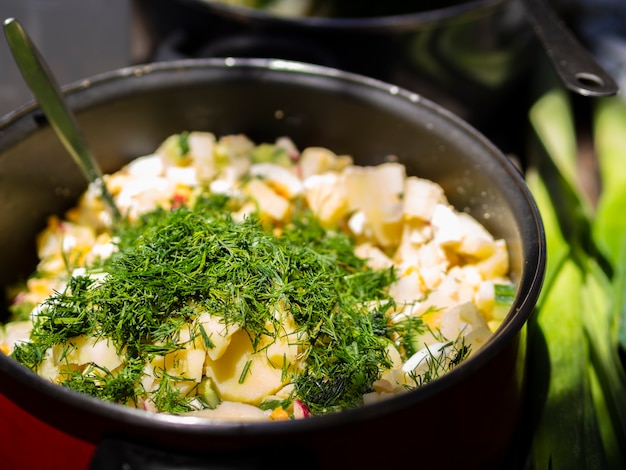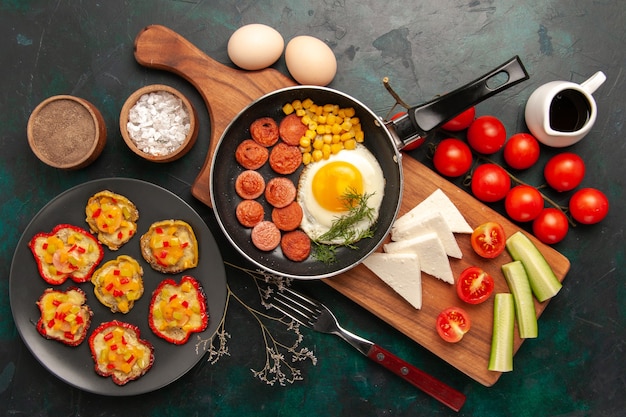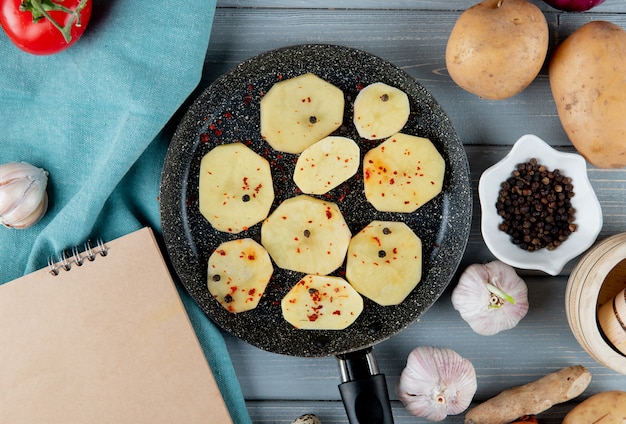The aroma of a freshly baked frittata, with its golden-brown crust and a symphony of flavors just waiting to be discovered, is something that always makes me happy. But there's a bit of an art to getting that perfect frittata. It's not just about throwing ingredients into a pan and hoping for the best. There are some key things to keep in mind, especially when it comes to baking time and oven temperature. And let me tell you, I've learned this the hard way! Over the years, I've had my share of frittata disasters – overcooked, undercooked, you name it. But through trial and error, I've discovered some tricks and tips that consistently deliver the perfect frittata. So, grab your favorite pan and let's dive into the world of frittata baking.
Part 1: The Foundation of a Frittata: Oven Temperature and Baking Time

Think of a frittata like a well-structured building. You need a strong foundation, and that foundation is the oven temperature and the baking time. These two elements work together to create the perfect balance of a set, fluffy interior with a beautifully browned crust.
The Oven Temperature: The Key to Success
First, let's talk about the oven. Preheating your oven to 350°F (175°C) is the standard starting point. It's like setting the stage for your frittata to shine. But here's the thing, ovens can be fickle. Some run hotter, others cooler. A good way to get a feel for your oven is to use an oven thermometer. It's a simple tool that can save you from overcooked or undercooked disasters.
Now, if you're craving a gloriously golden-brown crust on your frittata, consider a quick trip under the broiler towards the end of the baking time. Just be careful not to overdo it, or your frittata might end up looking a bit like a burnt offering!
Baking Time: The Art of Timing
Baking time is a bit of a dance, a delicate balance between patience and observation. It all comes down to the size and thickness of your frittata. A smaller frittata will be ready sooner than a larger one, and a thin frittata will cook faster than a thick one. A good starting point for a medium-sized frittata is 20 to 30 minutes. But remember, every oven is different, and every frittata is unique.
You know, it's easier to overcook a frittata than undercook it. So, don't be afraid to check it early and often. Look for a set center, slightly browned edges, and a springy texture. If you give the pan a gentle shake and the frittata doesn’t jiggle, it’s a sure sign that it’s ready.
Part 2: The Frittata's Building Blocks: Eggs, Fillings, and the Crust

Now that we have a good understanding of the oven and baking time, let's delve deeper into the building blocks of a delicious frittata.
The Eggs: The Foundation of Flavor and Texture
The eggs are the heart and soul of a frittata. Think of them as the mortar that holds everything together, providing structure and flavor. The number of eggs you use will depend on the size of your frittata. You can use as few as three or four for a smaller one or up to a dozen for a larger one. Personally, I like to use six eggs for a frittata that's perfect for sharing.
To make your frittata extra fluffy, I like to add a splash of milk or cream to the egg mixture. It adds a touch of richness and helps create a light, airy texture. Don't forget to season your egg mixture with a pinch of salt and pepper to taste.
The Fillings: Unleashing Your Creativity
Now, this is where the fun really begins! The fillings are your chance to get creative and express your culinary personality. The possibilities are endless, from classic combinations to adventurous concoctions.
I always love to use seasonal ingredients. In summer, tomatoes, basil, and mozzarella are a delightful combination. In winter, I go for spinach, mushrooms, and goat cheese. And let's not forget about the magic of leftover vegetables. They can be transformed into delicious frittata fillings. Just make sure to chop your ingredients into bite-sized pieces. This ensures even cooking and prevents your frittata from becoming too dense.
The Crust: The Golden Touch of Perfection
There's something about a golden-brown frittata crust that just screams delicious. It's the perfect contrast to the soft, creamy interior. This crust is a result of the eggs cooking in the pan, and it's crucial to get the pan nice and hot before adding the egg mixture. This helps prevent sticking and promotes that beautiful browning. Don't skimp on the butter or oil either! They add flavour and contribute to the crust's golden perfection.
Part 3: Frittata Wisdom: Common Questions Answered

You’ve got your oven preheated, your ingredients prepped, and you're ready to go. But what if you’re feeling a little unsure about something? Here are some common questions I often hear from fellow frittata enthusiasts.
The Soggy Frittata: A Culinary Nightmare
We've all been there, taking a bite of our frittata and realizing the middle is still wet and soggy. It's a classic frittata fail! The most common culprit is adding too much moisture to your filling. Make sure your vegetables are well-drained. Sautéing them beforehand can help remove excess moisture, and if you're using spinach, give it a good squeeze to get rid of any excess water. Remember, a slightly dry frittata is better than a soggy one.
The Art of Perfect Cooking: Signs of a Frittata Ready to Shine
As I mentioned earlier, checking your frittata early and often is key. Look for a set center, slightly browned edges, and a springy texture. If you're unsure, use a toothpick. If it comes out clean, your frittata is done.
And here's a little tip: If you're using a lot of cheese, add it towards the end of the baking time to prevent it from becoming rubbery.
Serving Time: Warm, Cold, or Both?
The beauty of a frittata is its versatility. You can enjoy it hot, warm, or even cold. I personally love it warm, but a cold frittata makes a great picnic lunch. It's a fantastic meal prep option. Make a large batch and you'll have delicious lunches or dinners for the next few days.
Part 4: Beyond the Basics: Exploring Frittata Variations
Now that you have a firm grasp of the fundamentals, let's explore some creative frittata variations. These are just a few examples to spark your imagination!
The Classic: Spinach and Feta Frittata
Simple yet satisfying, this is a classic frittata that never fails to please. Sauté some spinach until it's wilted, then add it to your egg mixture along with crumbled feta cheese. Bake until the frittata is set. It's a delicious and healthy option.
The Hearty: Sausage and Pepper Frittata
If you're looking for something more substantial, try a frittata with sausage and peppers. Brown some sausage in a pan, then add sliced peppers. Cook until the peppers are tender, then add the sausage and pepper mixture to your egg mixture. Bake until the frittata is set. It's a comforting and satisfying meal.
The Vegetarian: Roasted Vegetable Frittata
For a vegetarian frittata, use your favorite roasted vegetables. I love zucchini, eggplant, and bell peppers. Roast the vegetables until they are tender, then add them to your egg mixture. Bake until the frittata is set. It's a delicious and healthy option.
Part 5: Frittata: More Than Just a Dish
A frittata is more than just a dish. It's a canvas for your culinary creativity. It's a dish that can be simple or elaborate, depending on your mood and your pantry. And you know what? It's a dish that can be enjoyed by everyone, bringing people together around the table. It’s a dish that can be shared with loved ones, a dish that can be savoured on a busy weeknight, a dish that can be enjoyed on a lazy weekend morning. And that’s what makes the frittata so special, don’t you think?
Part 6: Embracing Imperfection: The Art of the Frittata
Let’s face it, baking a frittata isn’t always a perfect, picture-perfect experience. There are days when the frittata comes out a bit dry, or maybe a little runny. But that's okay. It's all part of the process. And often, those imperfections are what make the frittata so unique and so delicious. Don't be afraid to experiment and see what happens. You might just surprise yourself with what you create.
Part 7: The Frittata: A culinary journey
The thing about baking a frittata is that it's a journey. It's a journey of discovery, a journey of experimentation. It’s a journey of learning, of perfecting your craft. It’s a journey that will take you to places you never imagined. So, go on, embrace the journey. Bake a frittata. You won’t regret it.
Part 8: Sharing the Joy of Frittata
And when you do bake that perfect frittata, share it with someone you love. Share it with a friend, a family member, a neighbor. Share it with anyone who will appreciate the warmth and the love that you’ve put into it.
FAQs
What if my frittata is too dry?
If your frittata is too dry, it might be because you overcooked it. You can try adding a little more milk or cream to the egg mixture next time. Or, you can try adding some chopped vegetables to the egg mixture before baking. The added moisture will help to prevent dryness.
Can I freeze a frittata?
Yes, you can freeze a frittata. Let it cool completely, then wrap it tightly in plastic wrap and foil. It can be stored in the freezer for up to 3 months. To reheat, thaw in the refrigerator overnight, then bake at 350°F for 30 minutes.
What are some other things I can add to my frittata?
You can add all sorts of things to your frittata! Some popular additions include:
- Bacon
- Ham
- Mushrooms
- Onions
- Bell peppers
- Tomatoes
- Garlic
- Herbs
- Cheeses
Can I bake my frittata in a smaller pan?
You can absolutely bake your frittata in a smaller pan! The baking time will be shorter. Just keep an eye on it to make sure it doesn't overcook.
Why does my frittata stick to the pan?
The most likely reason for a frittata sticking to the pan is that it wasn't hot enough when you added the egg mixture. Make sure the pan is very hot before you add the eggs. This will help to prevent them from sticking.
Part 9: The Frittata: A Culinary Journey (continued)
The more I bake frittatas, the more I realize that there's no one right way to do it. It's a very personal dish. It's about finding what you like and what works for you. So, don't be afraid to experiment. Be creative. And most importantly, have fun with it!
Part 10: A Frittata Recipe Table: Your Culinary Guide
Here's a table with some popular frittata recipes, ingredients, and baking times to help you get started.
| Frittata Recipe | Ingredients | Baking Time |
|---|---|---|
| Classic Spinach and Feta Frittata | 6 eggs, 1/2 cup milk, 1/4 cup chopped spinach, 1/4 cup crumbled feta cheese, salt and pepper to taste | 25-30 minutes |
| Hearty Sausage and Pepper Frittata | 6 eggs, 1/2 cup milk, 1/2 cup cooked sausage, 1/2 cup chopped bell peppers, salt and pepper to taste | 25-30 minutes |
| Vegetarian Roasted Vegetable Frittata | 6 eggs, 1/2 cup milk, 1 cup roasted vegetables (zucchini, eggplant, bell peppers), salt and pepper to taste | 25-30 minutes |
Part 11: The Frittata: A culinary adventure Awaits
So, there you have it. The art of baking a frittata, from oven temperature to baking time. It's a simple dish, but it's a dish that can be so much more than just simple. It’s a dish that can be a culinary masterpiece. It’s a dish that can be a culinary adventure. It’s a dish that can be your own. So, go on, embrace the challenge. Bake a frittata. You might just surprise yourself.
Everyone is watching

How to Cook Frozen Lobster Tails Perfectly: A Step-by-Step Guide
RecipesLobster. Just the word conjures up images of lavish meals, special occasions, and a taste of luxury. But let's...

Pigs in a Blanket Cooking Time: How Long to Bake for Perfect Results
RecipesAh, pigs in a blanket. Just the name conjures up images of those delightful little parcels of crispy pastry en...

Pork Fillet Cooking Time: How Long to Cook It Perfectly
RecipesPork fillet, or tenderloin as it's sometimes called, is a real favourite in our house. It's so versatile, and...

The Ultimate Guide to Tender, Juicy Pulled Pork
RecipesRight, let's talk pulled pork. It's one of those dishes that just screams "comfort food," doesn't it? I mean...

The Ultimate Guide to Cooking Sweet Potatoes: From Roasting to Mashing
RecipesSweet potatoes. Just the name conjures up images of warm, comforting dishes, bursts of vibrant color, and a to...
